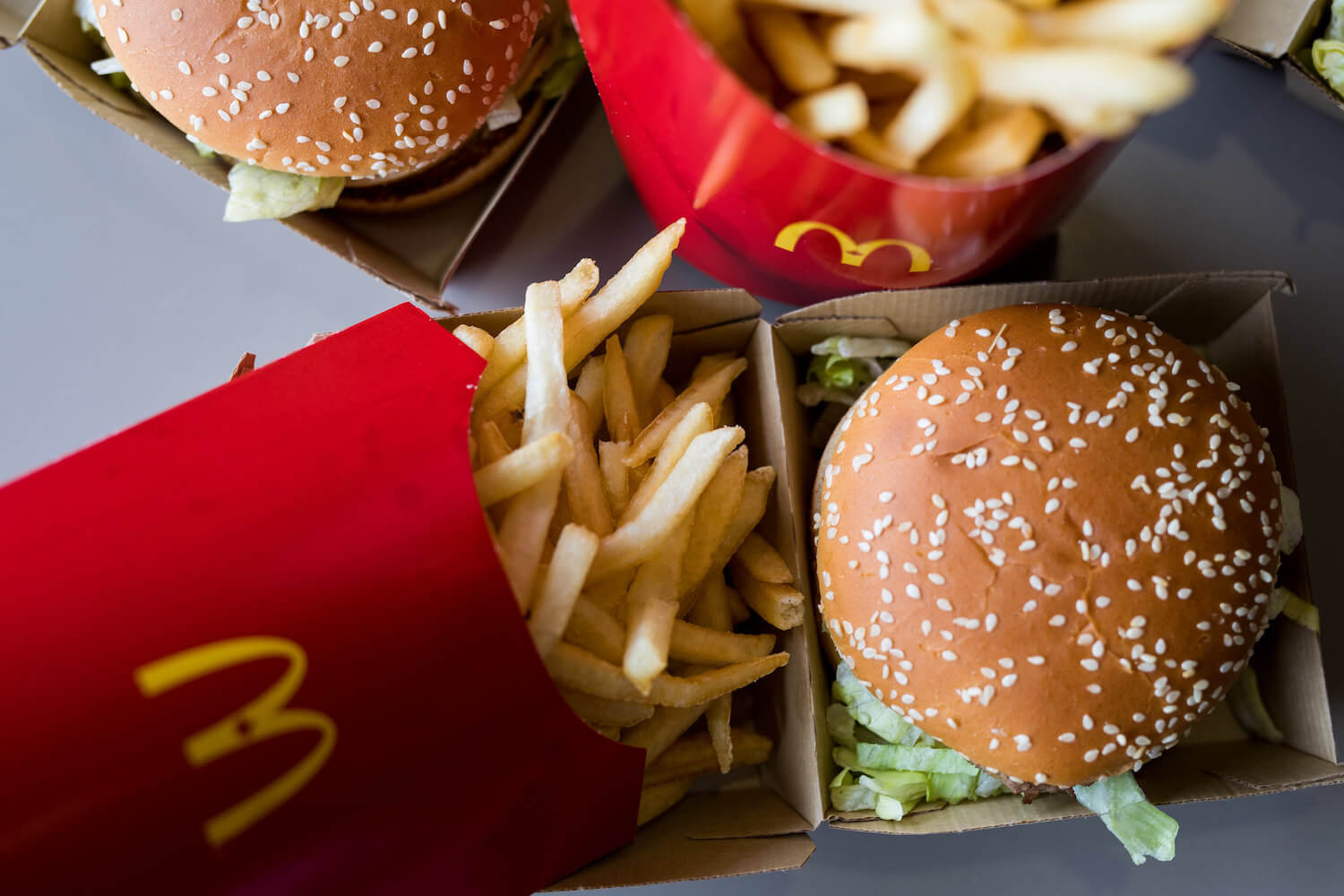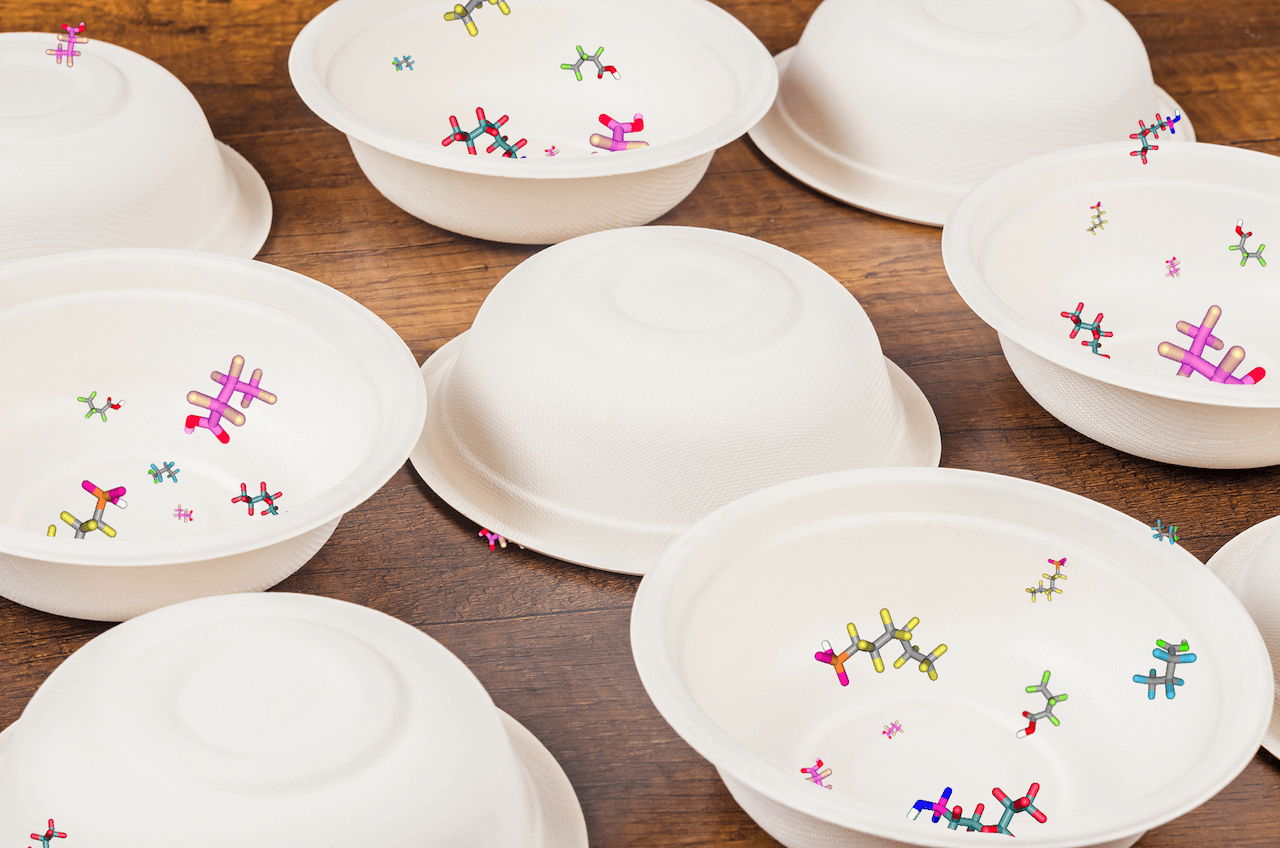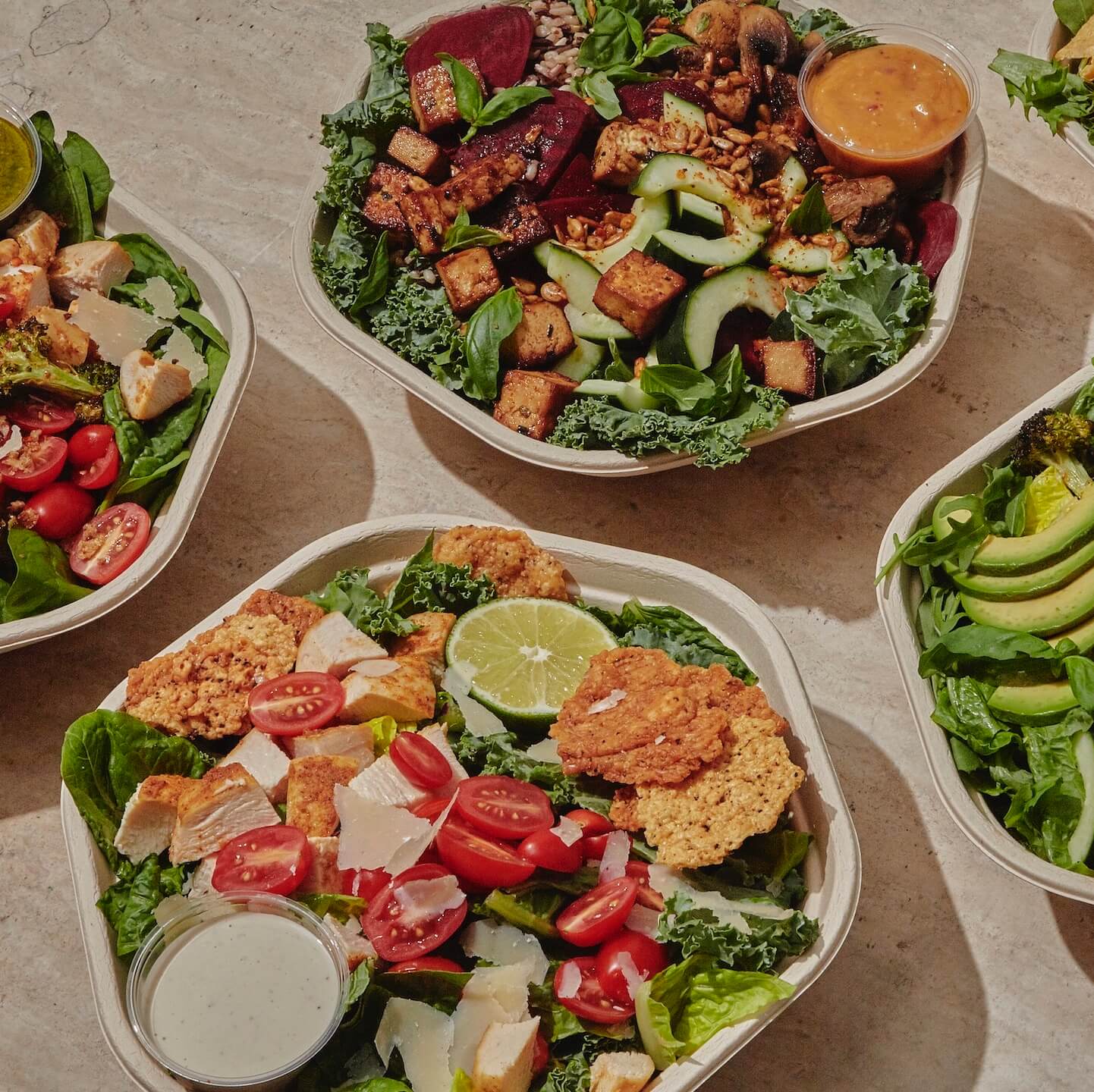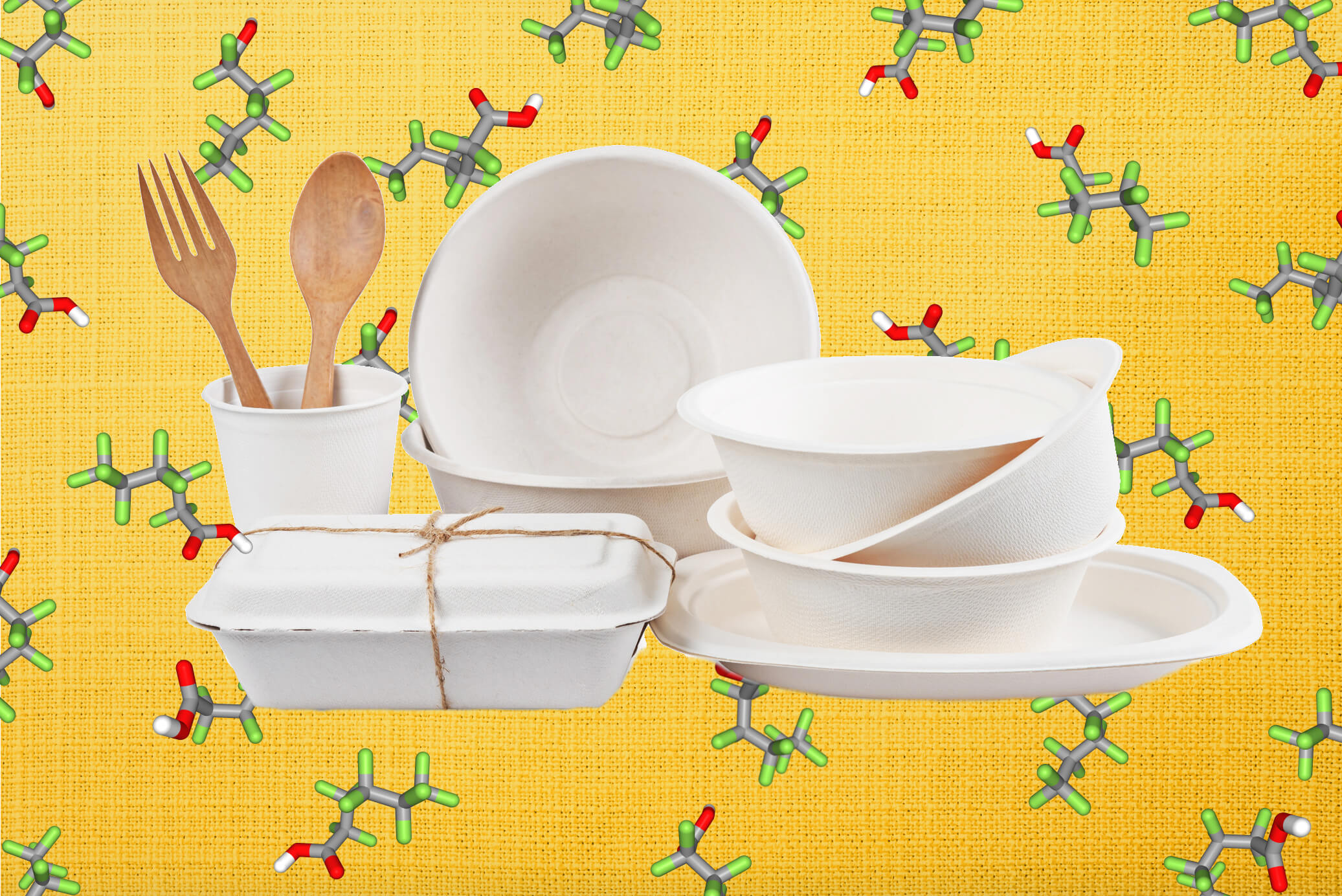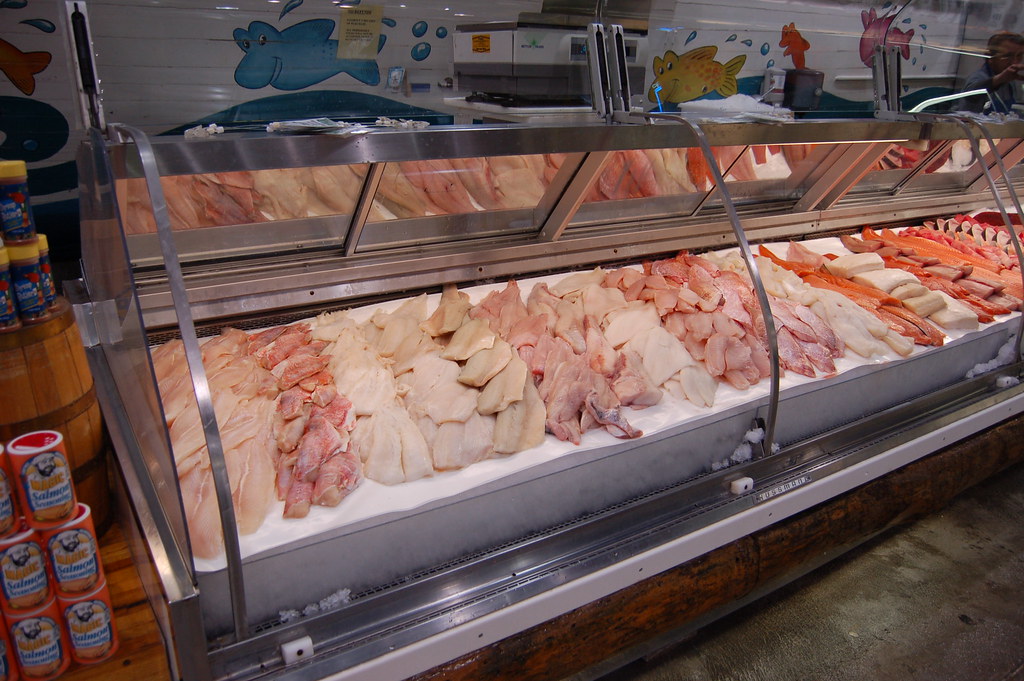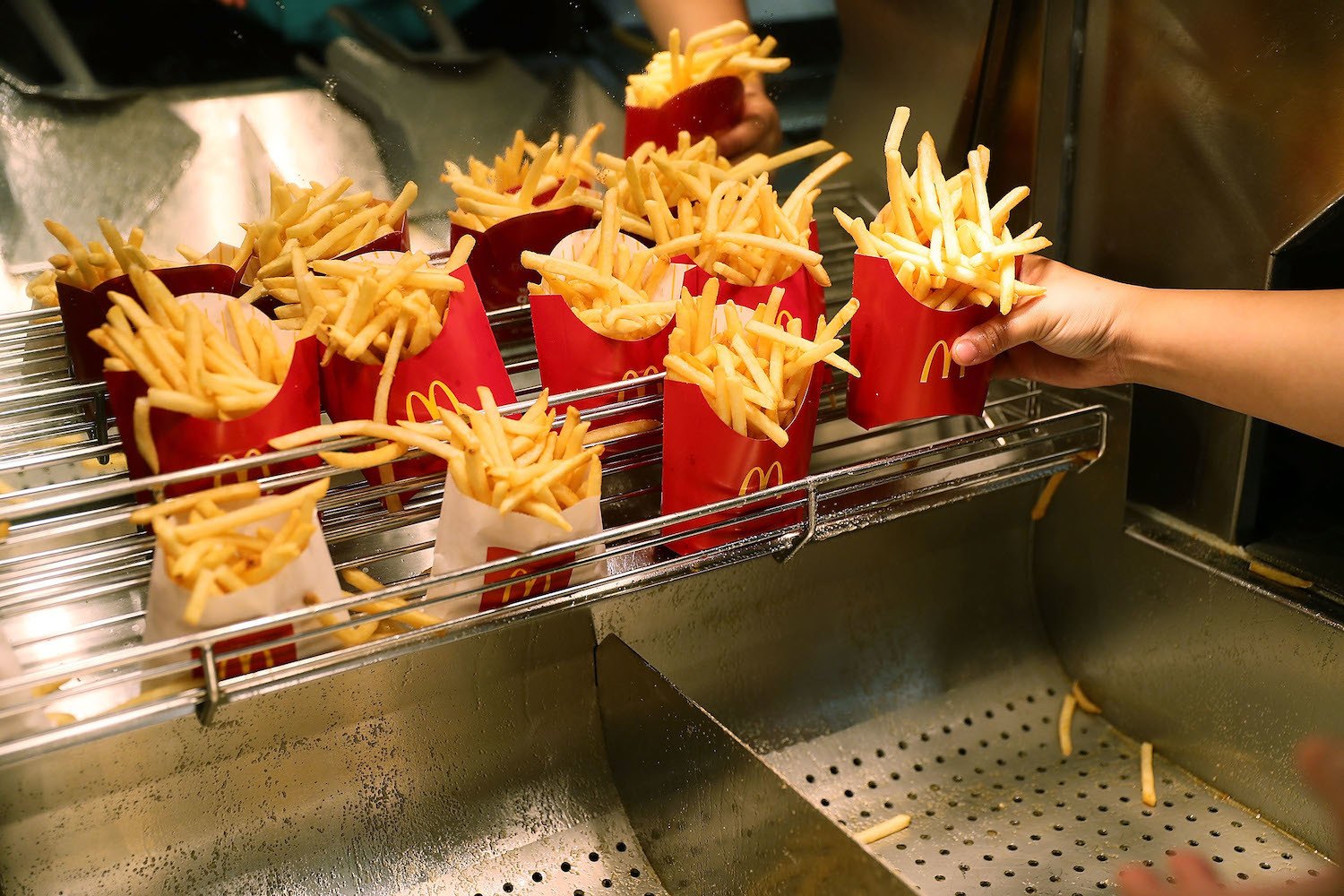
Joe Raedle/Getty Images
Ahead of the study’s release, several major brands pledged to phase out the potentially toxic substances.
Some food packaging still contains high levels of PFAS—compounds nicknamed “forever chemicals” because of their tendency to linger in soil and water—despite companies’ efforts to phase them out, according to a new study from Consumer Reports.
The study, released Thursday, measured the organic fluorine content (an indicator of the presence of PFAS) of 118 food packaging products from common brands like Trader Joe’s and Arby’s. Nearly one in five products contained fluorine levels that exceeded 100 parts per million (ppm), the maximum allowable threshold for food packaging used in the state of California starting in January 2023. Regulators have begun taking action on PFAS in food packaging because of their potential to cause a range of health risks.
The highest fluorine levels were detected in bags for sides from Nathan’s Famous (876 and 618 ppm), Cava’s fiber trays for kids’ meals (548.5 ppm), and Chick-fil-A’s sandwich wrap wrappers (553.5 ppm). McDonald’s french fry and McNugget bags, Burger King’s cookie bags, and Stop and Shop’s paper plates exceeded the 100 ppm threshold, too. Ahead of the study’s release, Burger King and Chick-fil-A both made public commitments to phase PFAS out of their packaging. (Nathan’s Famous told Consumer Reports it had eliminated the high-concentration items from its packaging since the samples were taken.)
PFAS don’t break down in the environment, and they can leach into water and soil and into crops and fish.
PFAS, or per- and polyfluoroalkyl substances, are used in food packaging because they resist water and grease, helping bags and bowls maintain their shape after being filled with greasy or hot foods. But they don’t break down in the environment, and they can leach into water and soil and into crops and fish. There’s also some evidence they can transfer directly from packaging to food: One recent study found that people who regularly consumed microwavable popcorn and fast food had higher levels of PFAS in their bloodstreams than control group participants. The Counter explained these processes at length in a 2019 investigation.
Neither the rate at which PFAS transfer from packaging to food nor the long-term health impacts of the substances in food packaging are well understood. That’s partially because testing for PFAS lags far behind its manufacturing. The Environmental Protection Agency has validated testing methods for 39 different PFAS chemicals, but regulators estimate there are at least 660 types being used in the U.S. High levels of PFAS exposure has been linked to suppressed immune systems, problems in pregnancy, and some cancers.
There’s a bit of good news, though. “Companies are all trying to take action, and I think we didn’t find any PFAS in about half of our samples. So that shows that those low levels can be met,” says Michael Hansen, senior staff scientist at Consumer Reports. Additionally, Hansen added, many of the samples contained very low levels of organic fluorine, suggesting the products were contaminated during the manufacturing process by ink or conveyor belts, rather than being treated directly with PFAS.
Seventeen states have either enacted or proposed regulations to limit PFAS in food packaging, though California is the only legislature to specify a maximum allowable threshold, at 100 ppm.
Even the highest fluorine levels detected in the new tests fall far below the levels The Counter found in bowls from Sweetgreen, Chipotle, Dig, and other fast-casual restaurants in 2019. In those tests, average fluorine concentrations exceeded 1450 parts per million across the board. By contrast, the Consumer Reports analysis found fluorine concentrations of less than 10 parts per million in Sweetgreen bowls, suggesting substantial improvement. Sweetgreen had previously announced it would stop using packaging containing PFAS by the end of 2020. (Hansen cautions that Consumer Reports and The Counter used different methods for their tests, so it’s not a perfect comparison. The Counter’s testing focused on the surfaces of the salad bowls instead of the whole package.)
Seventeen states have either enacted or proposed regulations to limit PFAS in food packaging, though California is the only legislature to specify a maximum allowable threshold, at 100 ppm. Hansen favors an even lower threshold—20 parts per million—which has been adopted in Denmark. He says the Danish government exclusively considered health concerns in crafting its regulation, whereas in California the threshold was negotiated with the packaging industry, resulting in a higher allowable limit
Consumer Reports launched a petition calling on fast food brands to make public commitments to end the use of PFAS in their wrappers. In the long run, Hansen says he’d also like to see the Food and Drug Administration take more action to regulate the substances. “They should be banning PFAS use in food-contact substances,” he said. “They should be setting levels and limits for food.”
Disclosure: The editor on this piece, Jesse Hirsch, formerly worked as a food editor at Consumer Reports.

